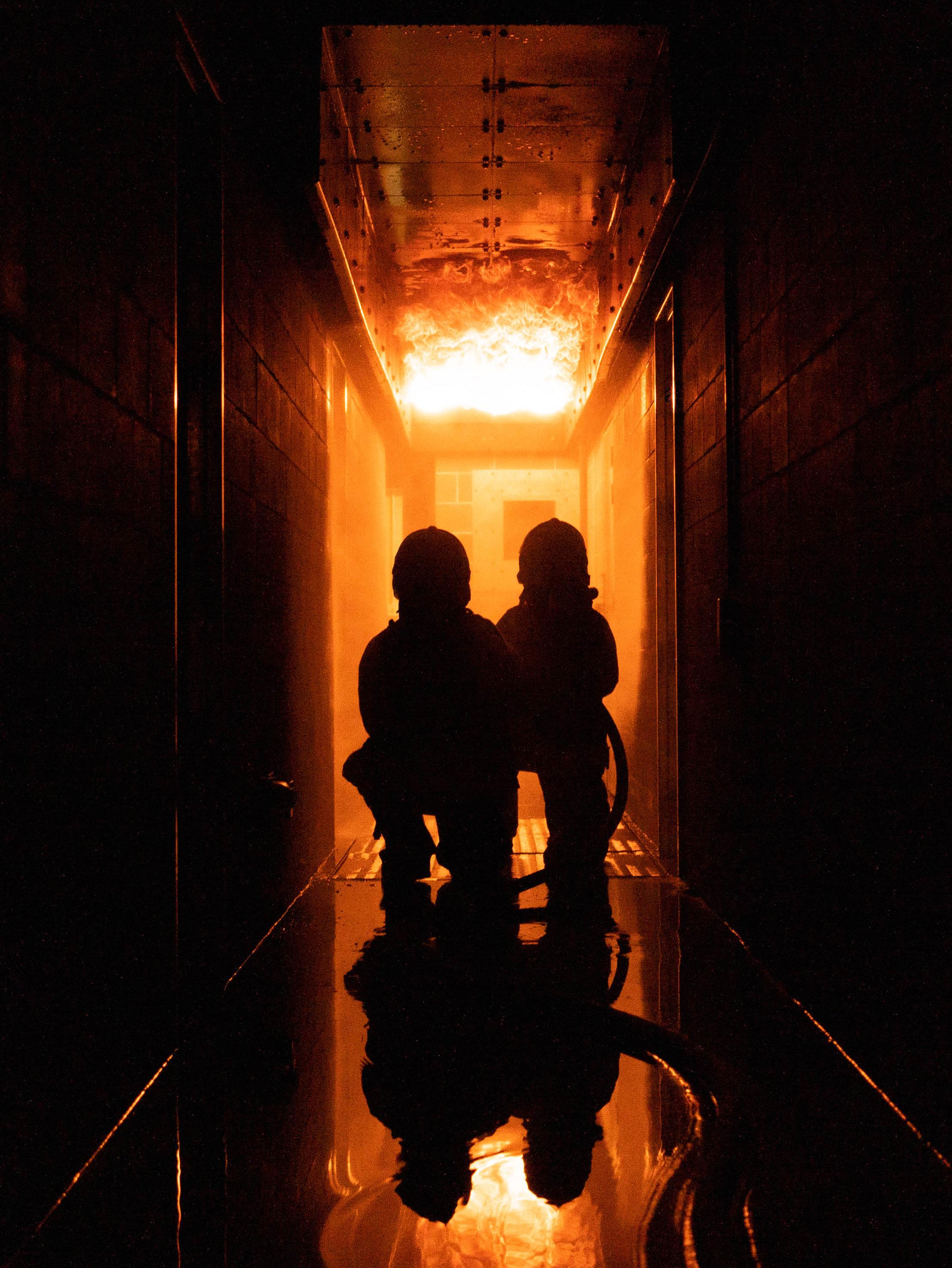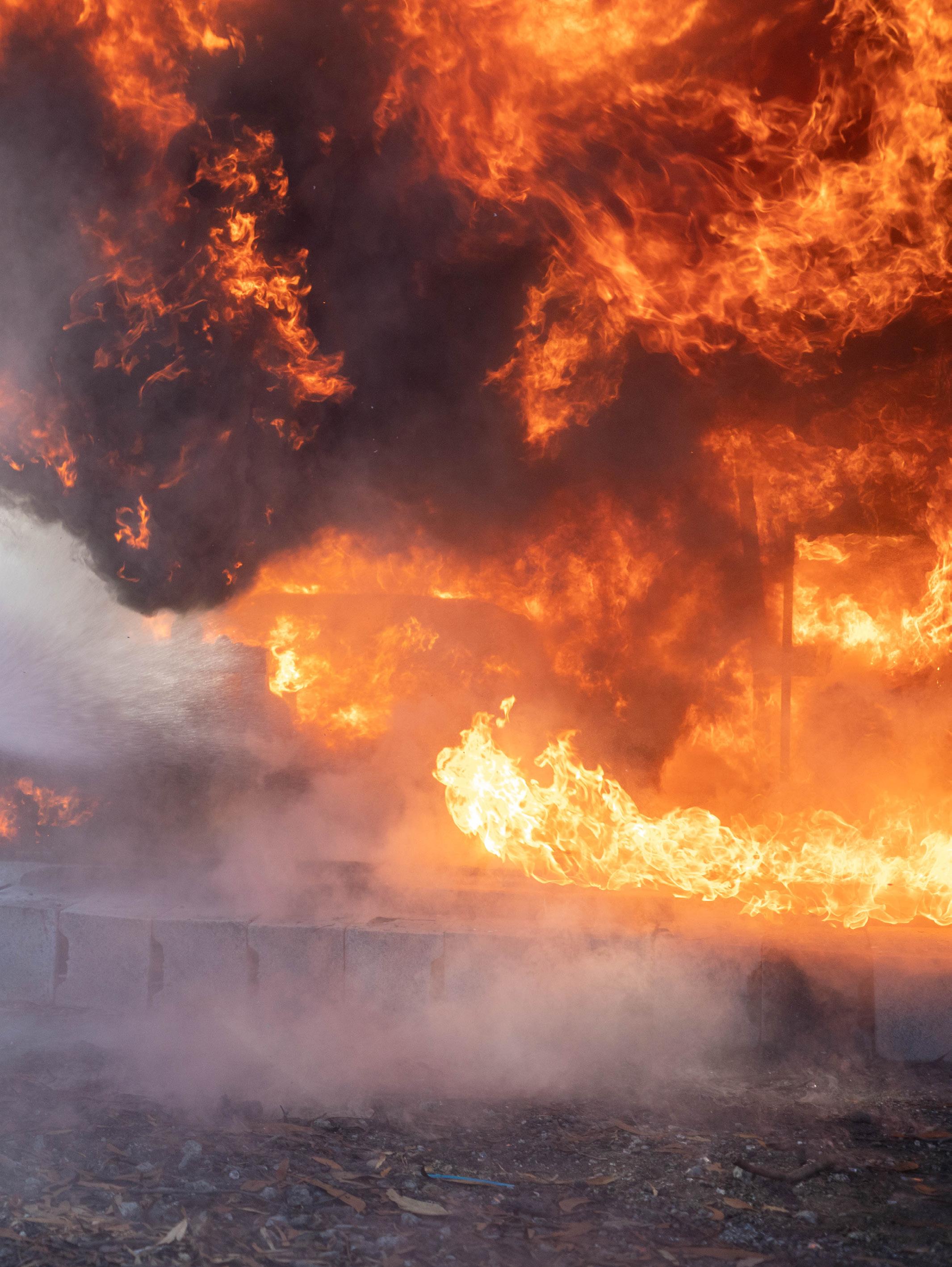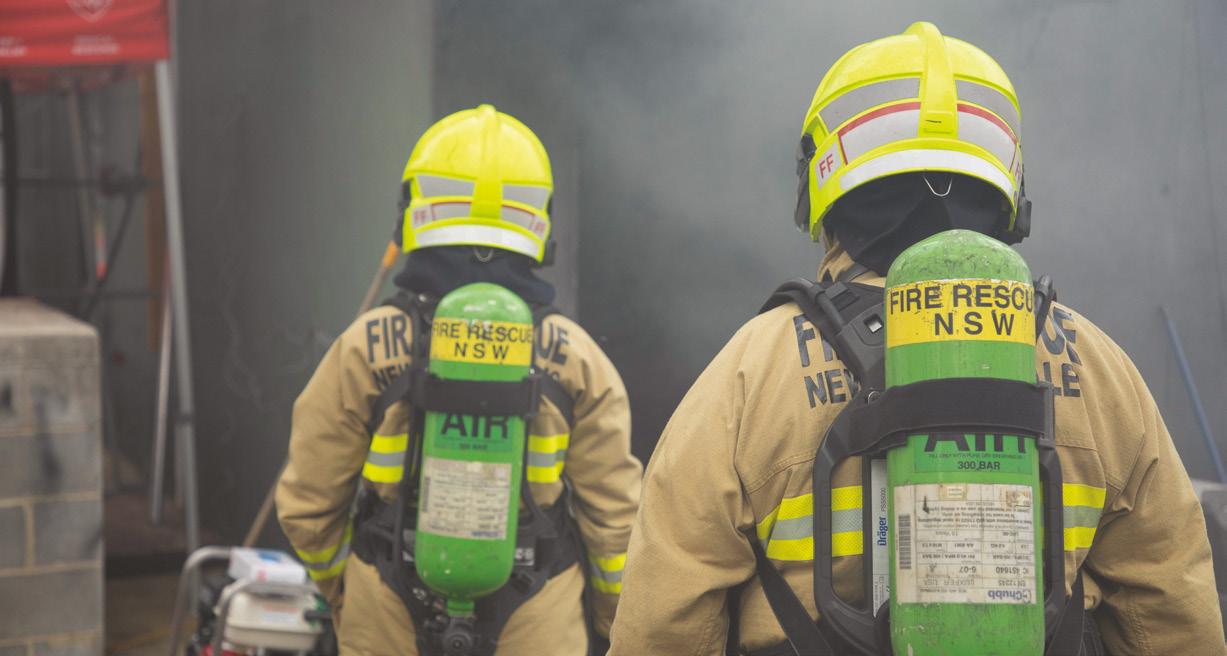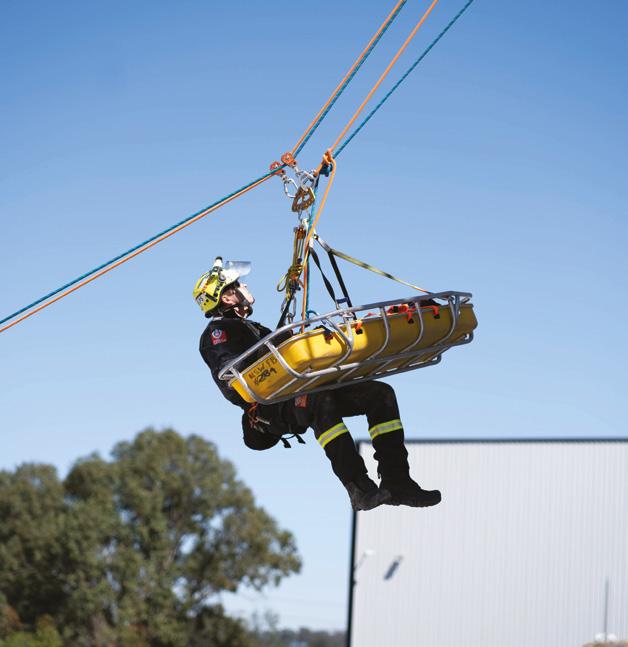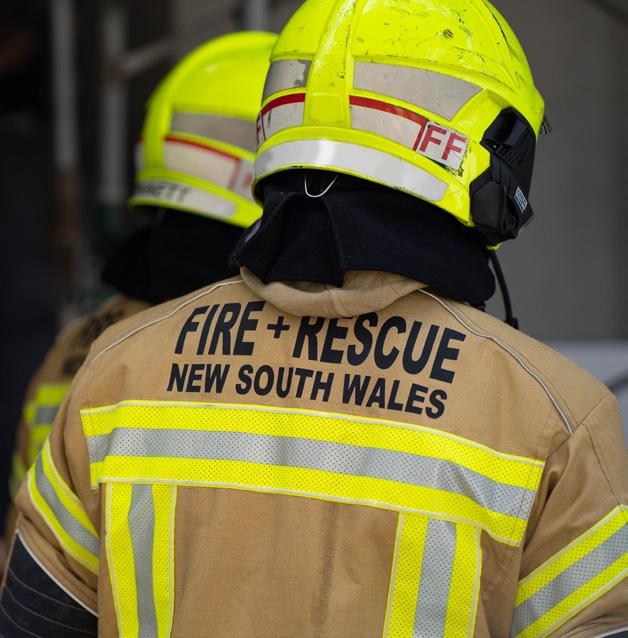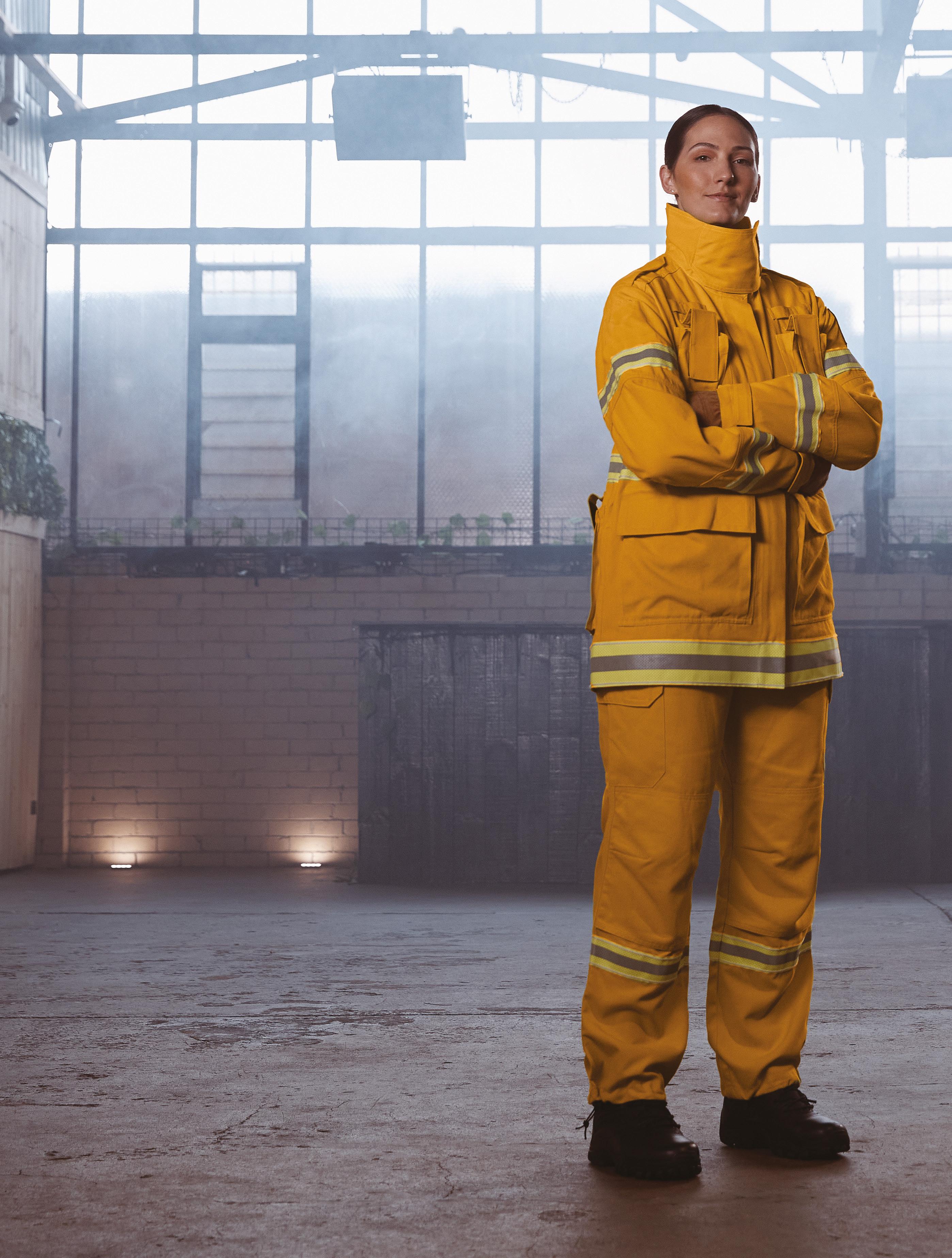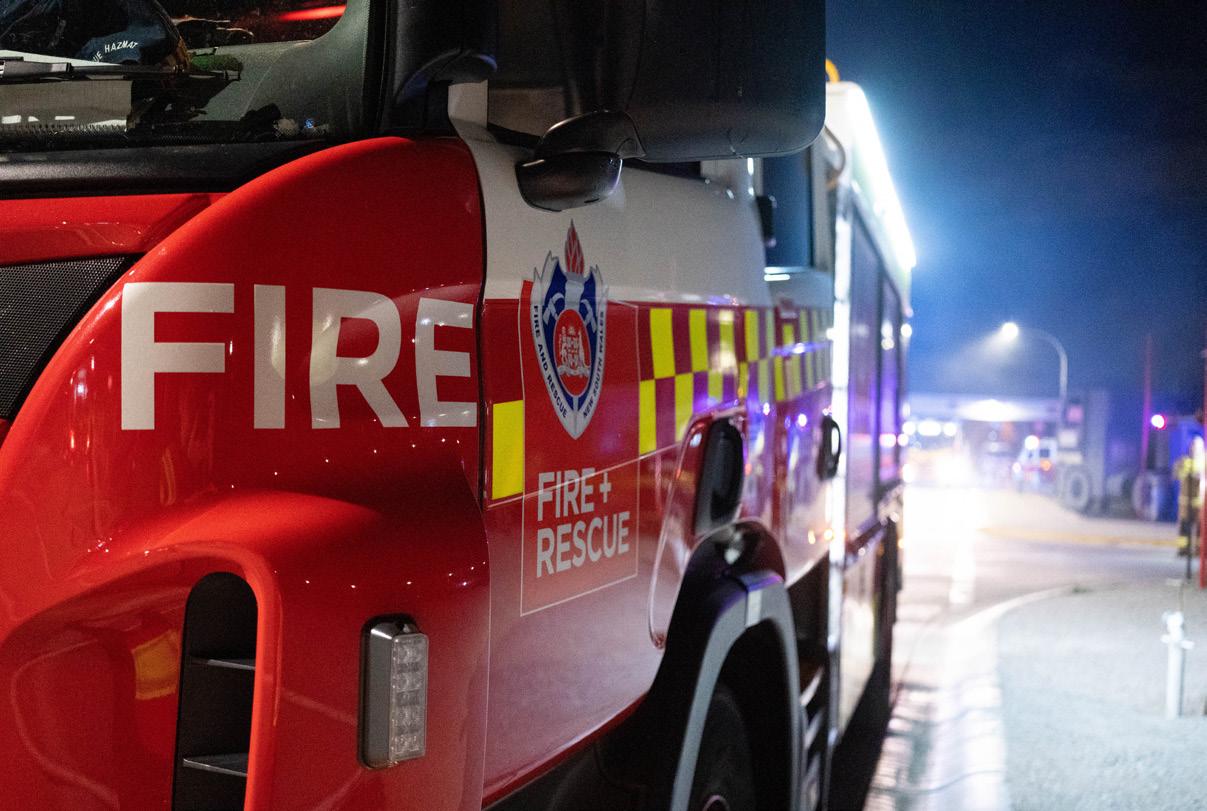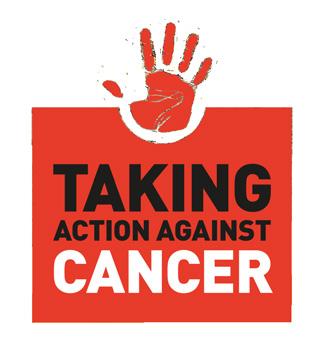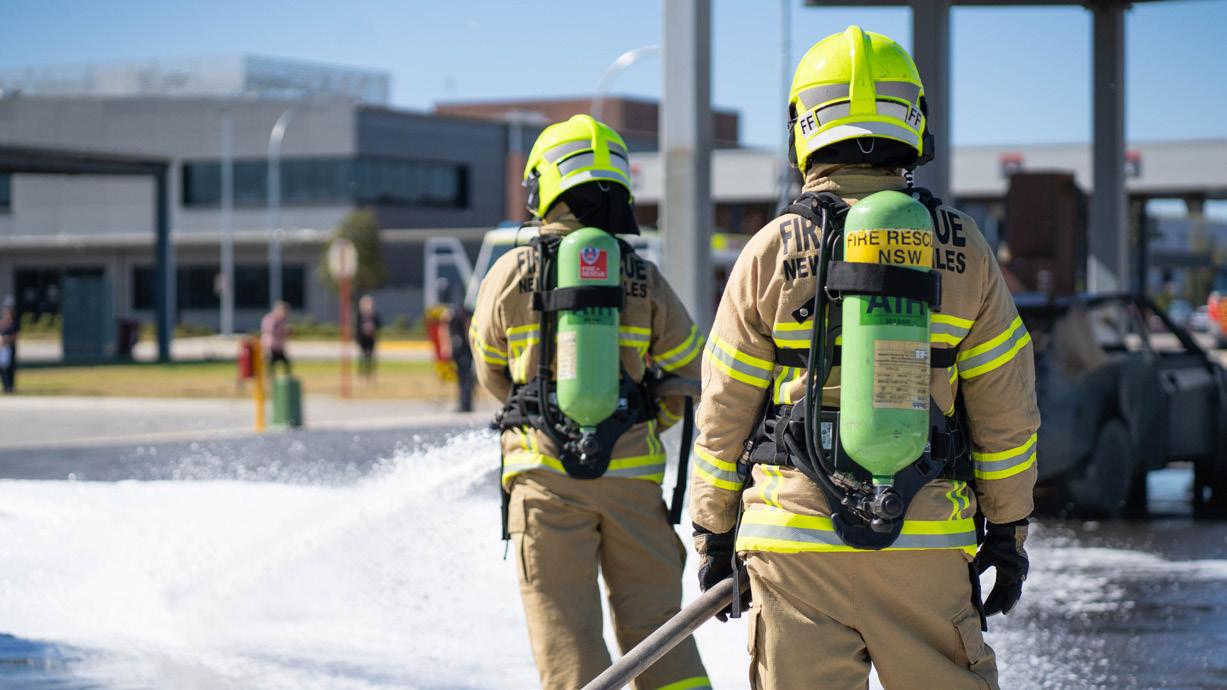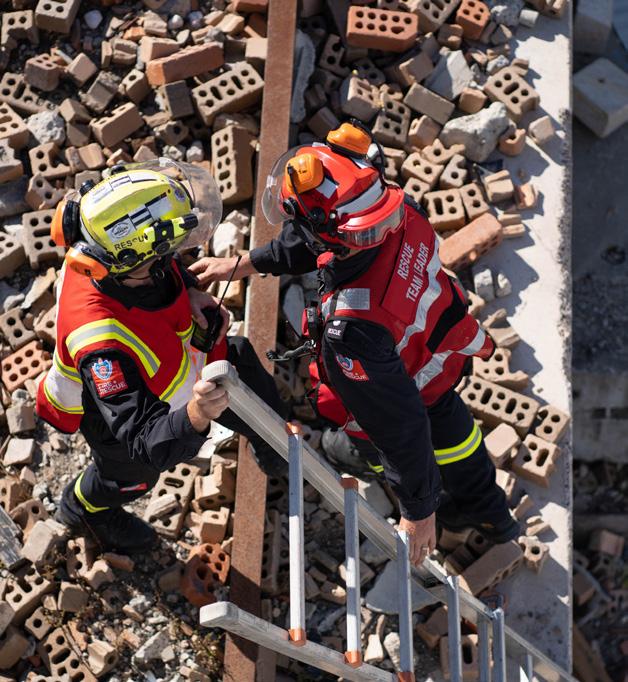PREPARED FOR ANYTHING, ANYTIME
Proudly celebrating the impressive milestone of 140 years of dedicated service, Fire and Rescue NSW (FRNSW) is the state government agency responsible for providing fire, rescue, and hazardous materials (hazmat) services in cities and towns across New South Wales (NSW), Australia.
In 1884, the Metropolitan Fire Brigade was established in Sydney. It evolved into the NSW Fire Brigades in 1910 before eventually rebranding as FRNSW in 2011.
The pivotal service is one of the key agencies involved in the response phase of most emergency or disaster events throughout NSW and is
amongst the world’s largest urban fire and rescue services, as well as one of the busiest in Australia.
At present, the service utilises 335 fire stations spread across NSW, helping to protect the state’s population from emergencies involving fire, motor vehicle accidents, and other dangerous situations.
“THE PRIVILEGE OF BEING FIREFIGHTERS IS THAT WE GET TO PROVIDE HELP TO PEOPLE, BE WITH THEM WHEN THEY’RE AT THEIR MOST VULNERABLE, AND BEGIN TO REBUILD THEIR LIVES”
- JEREMY FEWTRELL AFSM, COMMISSIONER, FIRE AND RESCUE NSW
FRNSW also shields its local population from the dangers of hazmat emergencies and building collapses.
The service’s highly skilled officers and support staff provide rapid, reliable help in dealing with emergencies 24/7, with the overarching aim of saving lives and reducing the number of injuries.
“We also protect the environment and try to minimise damage
to property, including major infrastructure. In partnership with the community and other local services, we strive to prevent emergencies while planning and training to deal with those that do occur,” introduces Jeremy Fewtrell AFSM, Commissioner of FRNSW.
“I always wanted to be a firefighter, as many kids do, but for me there was always a deeper, personal connection as my grandfather worked for the NSW Fire Brigades after World War ll.
‘‘He was very proud of his career, and as a child, visiting him at work and getting to explore all the firetrucks and see the equipment was paradise,” he recalls fondly.
Fewtrell has worked in numerous operational roles in both metropolitan and regional locations over the last 27 years. As a graduate of the Institution of Fire Engineers, he holds a Bachelor of Natural Resources from the University of New England and a Master of Business Administration from Deakin University.
A FORCE TO BE RECKONED WITH
FRNSW is committed to building a diverse and highly skilled workforce ready and willing to serve the community with courage, care, and without judgment.
In this way, the service aims to create a culture where all employees feel safe and valued and can contribute, learn, and be their best every day.
“Our people, achievements, and commitment to the community embody a future-focused and world-class emergency service. We are here to protect the irreplaceable and we are prepared for anything, anytime,” Fewtrell acclaims.
FRNSW currently boasts 3,608 permanent firefighters, 3,214 on-call firefighters, 516 trades and administrative staff, and 4,772 Community Fire Unit (CFU) volunteers as of 30th June 2024.
“We’re really lucky to have such high-quality people in our team who all come from a diverse range of backgrounds,” he enthuses.
“We have curated a culture where people are able to come to work, contribute, and be fully supported and appreciated for who they are, the work they do, and what they bring to the organisation.”
ENSURING PREMIUM PROTECTION
As well as the obvious dangers of heat, the firefighters at FRNSW regularly encounter toxic fumes, sharp objects, uneven ground, slippery surfaces, biological fluids, spilt chemicals, and electricity.
“Because of this, firefighting uniforms need to provide the best protection possible for our firefighters,” Fewtrell expands.
Typical firefighting personal protective equipment (PPE) consists of a tunic made from fire-resistant synthetic fabric, which retains its structural strength after fire exposure and resists cuts and tears.
“It provides a good level of protection without exacerbating the metabolic heat stress of the firefighter. It is designed to enable good flexibility, and the collar has a long zip to ensure complete closure
of the jacket to the neck, while it also provides a high level of thermal resistance protection without being overly heavy to wear,” he adds.
FRNSW is continually reviewing requirements for PPE to ensure its firefighting staff are provided with the best quality equipment to enable them to safely carry out their work.
As such, firefighting uniforms need to be rigorously tested to ensure they can withstand the harsh environment of an emergency situation.
Workwear Group, one of its key suppliers for over a century, has created world-class clothing for services such as FRNSW and continues to outfit millions of courageous service people worldwide.
ACCELERANT DETECTION CANINE PROGRAMME
FRNSW also runs a nationally-leading
accelerant detection canine (ADC) programme, the first of its kind for Australasian fire services. These specially trained dogs and their handlers can cover large areas quickly to narrow down the area for frontline firefighters to undertake fire origin and cause analysis, and the results of their discoveries at the scene can then be used by FRNSW, the NSW Police Force, and the Coroner’s Office.
The original FRNSW K9 project started in 1995 with Sabre, a German Shepherd, followed by a black
FRNSW VALUES
Labrador, Kova, who served from 1996 to 2000. Then came Ellie, a golden Labrador donated by the Australian Customs Service in 2000 before retiring in 2008.
Today, FRNSW has three canines on active duty who attend an average of three jobs per week with their respective handlers.
As national leaders in this field, ADCs are 97 percent accurate and enjoy a high profile both internally within FRNSW and externally as a tool for fire prevention and the promotion
Every aspect of the work done at FRNSW is guided by a set of shared values. The company is committed to:
RESPECT – The service treats staff, partners, stakeholders, and recipients of its services with respect and fairness while recognising and accepting the differences, wishes, rights, feelings, and values of others.
INTEGRITY – FRNSW always acts professionally and can be trusted implicitly because of its honesty, transparency, and strong ethical principles, which underpin everything the service does.
SERVICE – The service is reliable and always performing its roles safely, effectively, and efficiently while taking responsibility for its actions and decisions.
COURAGE – The needs of the community are always put first by the agency, which has the courage not only to deal with serious emergency situations but to stand up for others and challenge wrongdoing.
of community fire safety messages.
“With a sense of smell 100,000 times more acute than a human’s, ADCs can detect fire accelerant in smaller concentrations than any portable scientific equipment currently available. These talented canines can even be used to sniff out traces of accelerant on suspected arsonists to support the Police investigation,” Fewtrell explains.
Furthermore, the dog’s quick noses can cover a scene in less than 30 minutes, saving days of human labour and avoiding the collection of additional forensic samples, reducing costs and laboratory time.
“The dogs are trained using gameplay and rewards, with handlers utilising as many different environments as possible including houses, office buildings, car parks, and bushlands to ensure that they do not become conditioned to only searching a particular type of scene,” he continues.
VAST BREADTH OF SERVICES
Alongside its urban response capabilities, FRNSW supports the NSW Rural Fire Service during and after bushfires in the local area, which have ravaged the region in recent years and present a constant and considerable threat.
“We work to prevent the occurrence of bushfires through our hazard reduction strategies and community education campaigns. Similarly, we also conduct research into factors affecting bushfire behaviour in order to continually improve our service,” Fewtrell explains.
“Another important aspect of our service is our work with communities to help them prepare for bushfire season. This includes the training and implementation of CFUs across the state,” he sets out.
In addition to the risk of bushfires, NSW has experienced flooding issues in the last two years as the length of Australia’s east coast severely impacted.
TAKING ACTION AGAINST CANCER
In firefighting operations, firefighters protect their respiratory tracts and skin from burns with the aid of respirators and protective clothing. However, it has been proved that substances can penetrate the body by means other than via the respiratory tract. As a result of the enormous heat, the skin is up to 400 percent more receptive to pathogens which can penetrate the body through open pores.
NEW PARTICULATE BLOCKING CLOSURE SOLUTIONS
Penetration of flue gas between layers of clothing is reduced by means of a new closure solution at potentially dangerous areas* in the protective clothing.
* Results from FAST testing. Fluorescent Aerosol Screening Test (FAST) offers visualisation of aerosol infiltration and deposition patterns as a means of detecting penetration points in protective clothing ensembles.
PARTICULATE BLOCKING FLASH HOOD
The flame-retardant hoods with a membrane protect the transition region between the jacket collar and the helmet-mask combination. In this way, the contact of cancer-causing substances with the skin in this area is reduced. Prevent® particulate blocking barrier excels in breathability and air permeability performance.
PARTICULATE BLOCKING SKIRT
The structural jacket has in addition a multilayered wicking barrier to ensure maximum coverage.
LHD GROUP HONG KONG LTD.
Unit 1003-1004. 10/F. Block 3
Tins Center. No.3 Hung Cheung Road
Tuen Mun. N.T. Hong Kong
P (+852) 2463 2982. F (+852) 2463 2770
LHD GROUP AUSTRALIA P/L
Unit 3. 15 Dunstan Road
Wingfield. South Australia
5013 Australia
P (+61) 8 8139 7777 F (+61) 8 8139 7788 lhd-group.com.au
PARTICULATE BLOCKING GAITER
Further closures of lining laminate in the trouser legs prevents the penetration of flue gas.
In direct response to this, FRNSW has accredited five water-based flood rescue stations and 20 land-based flood rescue stations, with 127 waterbased flood rescue technicians and 565 land-based flood rescue operators now added to the service’s elite team.
FRNSW therefore provides the best possible service for its communities and has developed a deep understanding of why it exists.
“We focus on spending extra time
“OUR PEOPLE, ACHIEVEMENTS, AND COMMITMENT TO THE COMMUNITY EMBODY A FUTURE-FOCUSED AND WORLD-CLASS EMERGENCY SERVICE. WE ARE HERE TO PROTECT THE IRREPLACEABLE AND WE ARE PREPARED FOR ANYTHING, ANYTIME”
-
JEREMY FEWTRELL AFSM, COMMISSIONER, FIRE AND RESCUE NSW
with people at an incident and giving them crucial support, remembering the human side of our work and the impacts on those people who are having the worst day of their lives when we get called.
“The privilege of being firefighters is that we get to provide help to people, be with them when they’re at their most vulnerable, and begin to rebuild their lives,” Fewtrell finishes proudly.
Tel: 02 9265 2999
info@fire.nsw.gov.au
www.fire.nsw.gov.au
